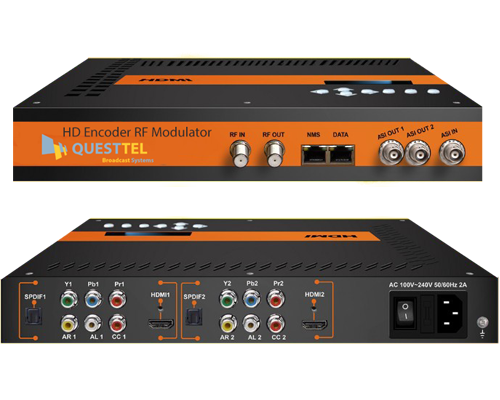Chroma Sub-Mapping Types
4:4:4 YCbCr Each of the three YCbCr components have the same sample rate. This scheme is sometimes used in high-end film scanners and cinematic postproduction. Two SDI connections are normally required to carry this bandwidth: Link A would carry a 4:2:2 signal, Link B a 0:2:2, when combined would make 4:4:4.
4:4:4 RGB (no subsampling) Note that "4:4:4" may instead be referring to RGB (Red, Green, Blue) color space, which implicitly does not have any chroma subsampling at all.
4:2:2 The two chroma components are sampled at half the sample rate of luma: the horizontal chroma resolution is halved. This reduces the bandwidth of an uncompressed video signal by one-third with little to no visual difference. This rate is often used in high-end encoders and video production equipment.
4:2:1 Although this mode is defined, very few firmware or hardware codecs use this sampling mode. Cb horizontal resolution is twice as low as one of Cr (and four times as low as one of Y). This exploits the fact that human eye has less spatial sensitivity to blue/yellow than to red/green. Similar to NTSC, in using lower resolution for blue/yellow than red/green, which in turn has less resolution than luma.
4:1:1 In 4:1:1 chroma subsampling, the horizontal color resolution is quartered, and the bandwidth is halved compared to no chroma subsampling. Originally, 4:1:1 chroma subsampling was not considered to be broadcast quality and was only acceptable for low-end and consumer applications.
Cb and Cr are each subsampled at a factor of 2 both horizontally and vertically. There are three variants of 4:2:0 schemes, that are sited differently both horizontally and vertically.
- In MPEG-2, Cb and Cr are co-sited horizontally. Cb and Cr are sited between pixels in the vertical direction (sited interstitially).
- In JPEG/JFIF, H.261, and MPEG-1, Cb and Cr are sited interstitially, halfway between alternate luma samples.
- In 4:2:0 DV, Cb and Cr are co-sited in the horizontal direction. In the vertical direction, they are co-sited on alternating lines. The PAL and SECAM color systems are especially well-suited to this kind of data reduction. Most digital video formats corresponding to PAL use 4:2:0 chroma subsampling.
QuestTel shall have no liability for any error or damage of any kind resulting from the use of this document.



